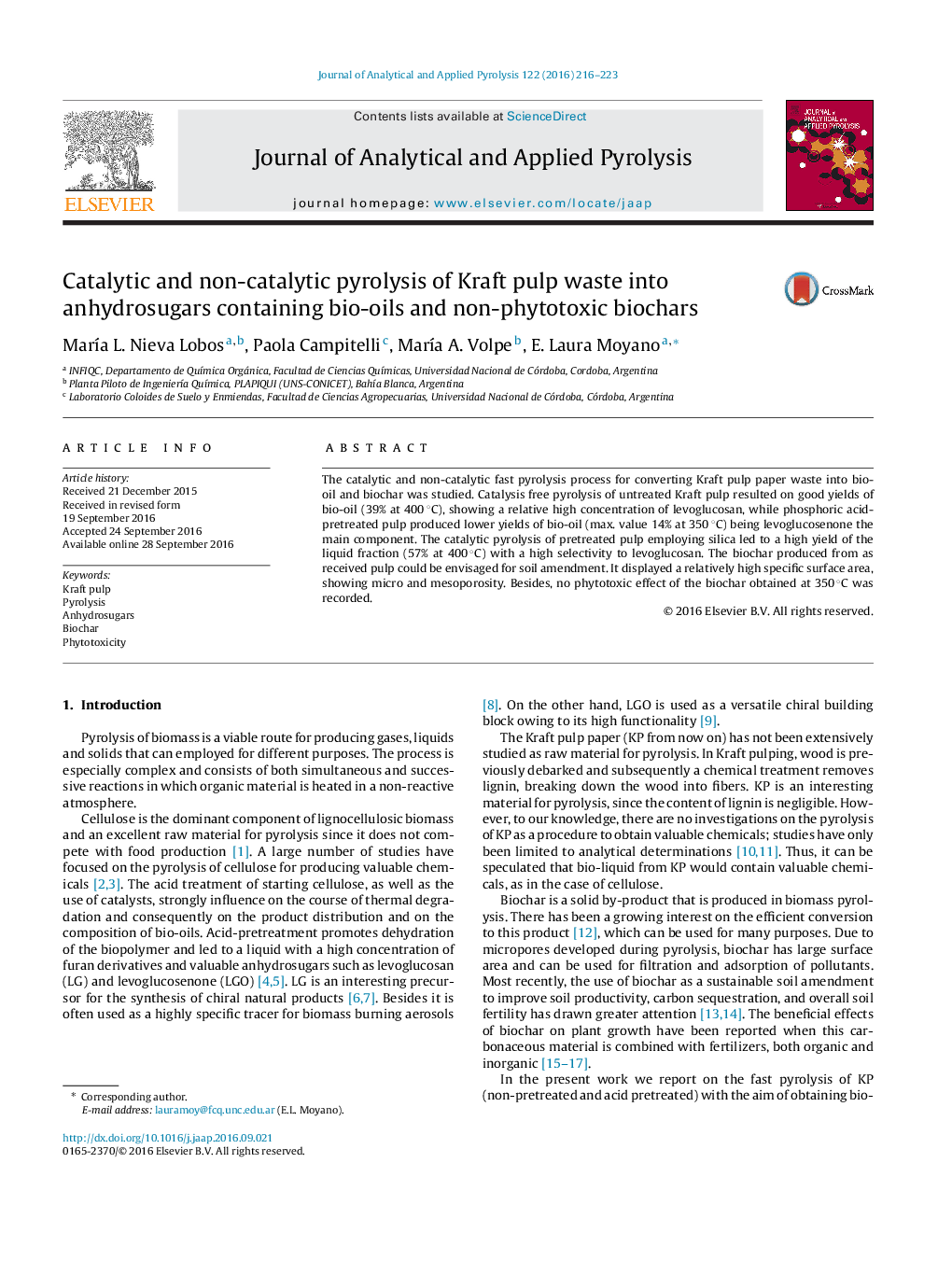| کد مقاله | کد نشریه | سال انتشار | مقاله انگلیسی | نسخه تمام متن |
|---|---|---|---|---|
| 5134771 | 1492955 | 2016 | 8 صفحه PDF | دانلود رایگان |
- Catalytic and non-catalytic pyrolysis of fresh and acid-treated Kraft pulp waste was investigated.
- SiO2 enhanced bio-oil production and selectivity to levoglucosan.
- Levoglucosenone formation was significant in the catalyst-free pyrolysis of acid-treated pulp.
- Characteristics and phytotoxicity assay of biochar from Kraft pulp pyrolysis were evaluated.
The catalytic and non-catalytic fast pyrolysis process for converting Kraft pulp paper waste into bio-oil and biochar was studied. Catalysis free pyrolysis of untreated Kraft pulp resulted on good yields of bio-oil (39% at 400 °C), showing a relative high concentration of levoglucosan, while phosphoric acid-pretreated pulp produced lower yields of bio-oil (max. value 14% at 350 °C) being levoglucosenone the main component. The catalytic pyrolysis of pretreated pulp employing silica led to a high yield of the liquid fraction (57% at 400 °C) with a high selectivity to levoglucosan. The biochar produced from as received pulp could be envisaged for soil amendment. It displayed a relatively high specific surface area, showing micro and mesoporosity. Besides, no phytotoxic effect of the biochar obtained at 350 °C was recorded.
102
Journal: Journal of Analytical and Applied Pyrolysis - Volume 122, November 2016, Pages 216-223
